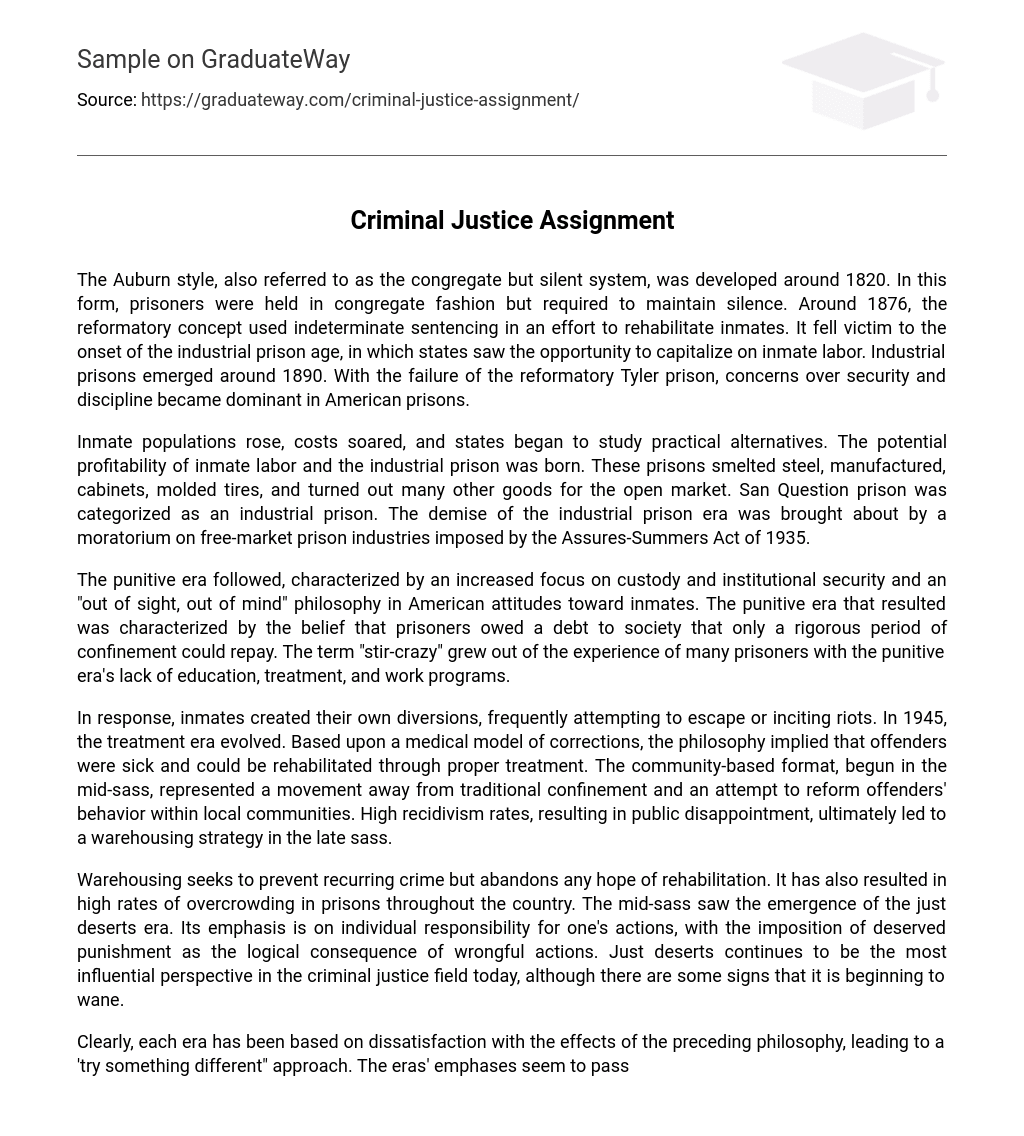The Auburn style, also referred to as the congregate but silent system, was developed around 1820. In this form, prisoners were held in congregate fashion but required to maintain silence. Around 1876, the reformatory concept used indeterminate sentencing in an effort to rehabilitate inmates. It fell victim to the onset of the industrial prison age, in which states saw the opportunity to capitalize on inmate labor. Industrial prisons emerged around 1890. With the failure of the reformatory Tyler prison, concerns over security and discipline became dominant in American prisons.
Inmate populations rose, costs soared, and states began to study practical alternatives. The potential profitability of inmate labor and the industrial prison was born. These prisons smelted steel, manufactured, cabinets, molded tires, and turned out many other goods for the open market. San Question prison was categorized as an industrial prison. The demise of the industrial prison era was brought about by a moratorium on free-market prison industries imposed by the Assures-Summers Act of 1935.
The punitive era followed, characterized by an increased focus on custody and institutional security and an “out of sight, out of mind” philosophy in American attitudes toward inmates. The punitive era that resulted was characterized by the belief that prisoners owed a debt to society that only a rigorous period of confinement could repay. The term “stir-crazy” grew out of the experience of many prisoners with the punitive era’s lack of education, treatment, and work programs.
In response, inmates created their own diversions, frequently attempting to escape or inciting riots. In 1945, the treatment era evolved. Based upon a medical model of corrections, the philosophy implied that offenders were sick and could be rehabilitated through proper treatment. The community-based format, begun in the mid-sass, represented a movement away from traditional confinement and an attempt to reform offenders’ behavior within local communities. High recidivism rates, resulting in public disappointment, ultimately led to a warehousing strategy in the late sass.
Warehousing seeks to prevent recurring crime but abandons any hope of rehabilitation. It has also resulted in high rates of overcrowding in prisons throughout the country. The mid-sass saw the emergence of the just deserts era. Its emphasis is on individual responsibility for one’s actions, with the imposition of deserved punishment as the logical consequence of wrongful actions. Just deserts continues to be the most influential perspective in the criminal justice field today, although there are some signs that it is beginning to wane.
Clearly, each era has been based on dissatisfaction with the effects of the preceding philosophy, leading to a ‘try something different” approach. The eras’ emphases seem to pass repetitively through a punishment-rehabilitation- punishment cycle, with the focus changing to accommodate social attitudes toward crime and criminal offenders. The reemergence of prison industries, efforts to improve the quality of jail life, and the movement toward regional jails and private prisons typify ongoing efforts to find better ways to handle incarceration of convicted offenders.





